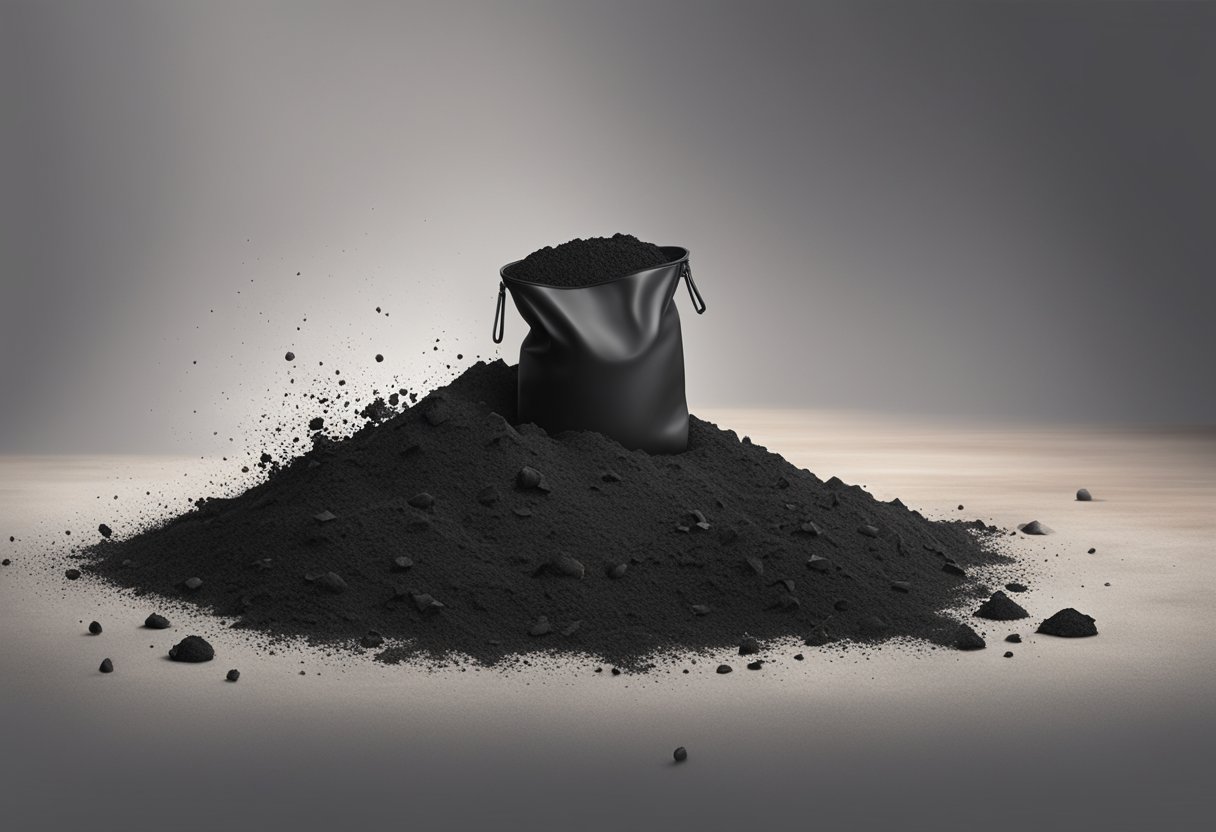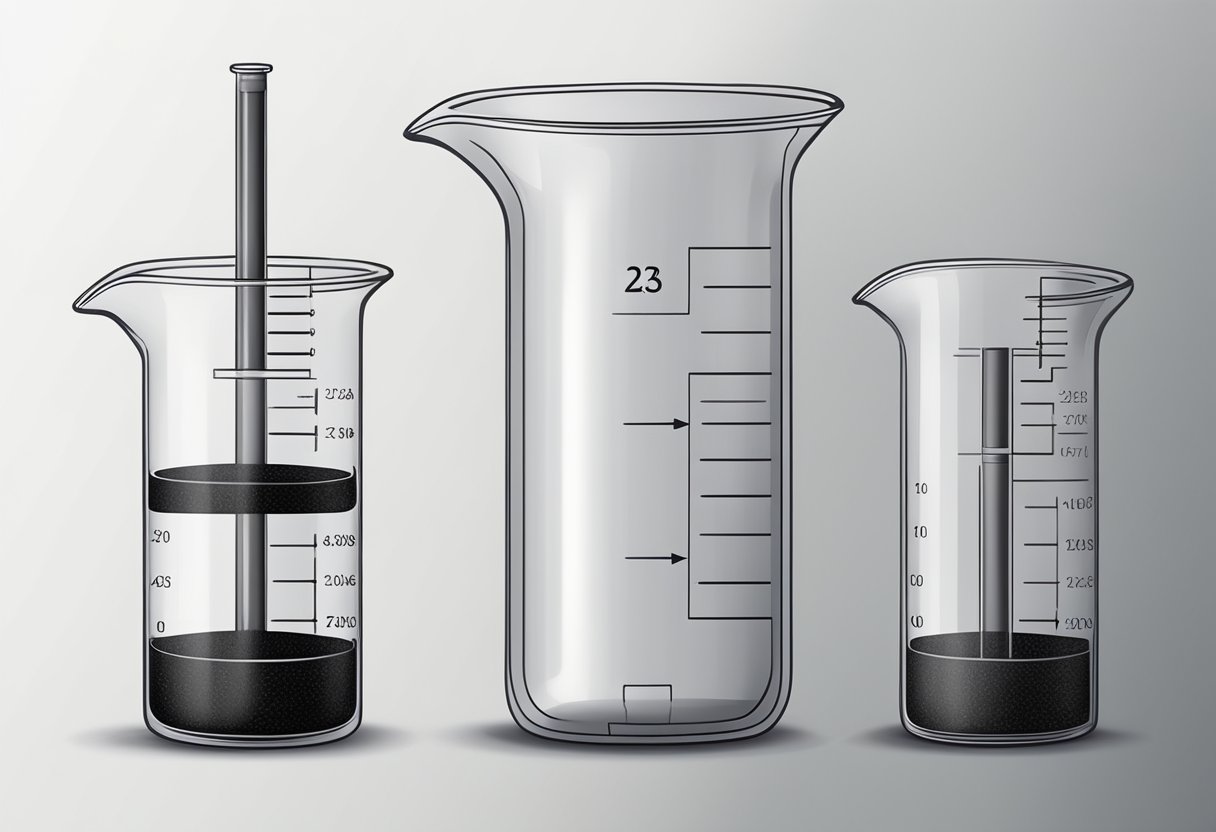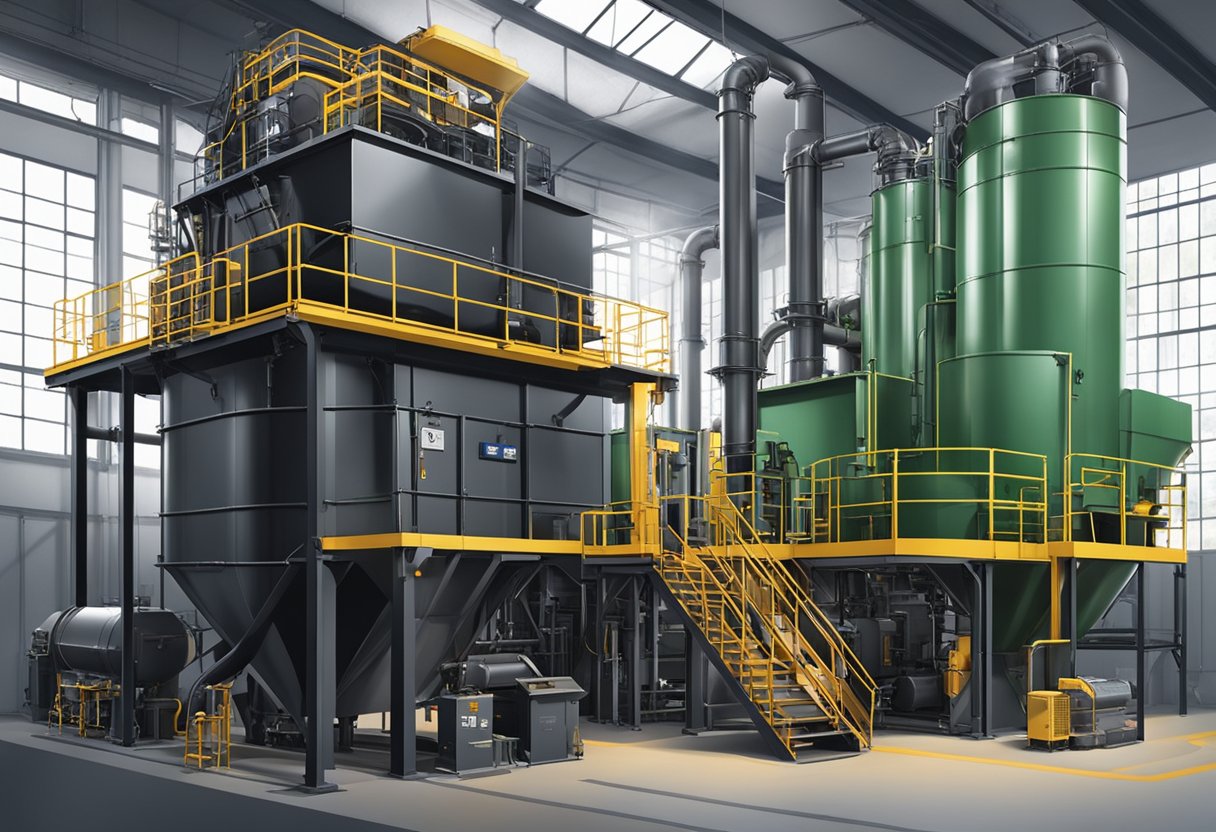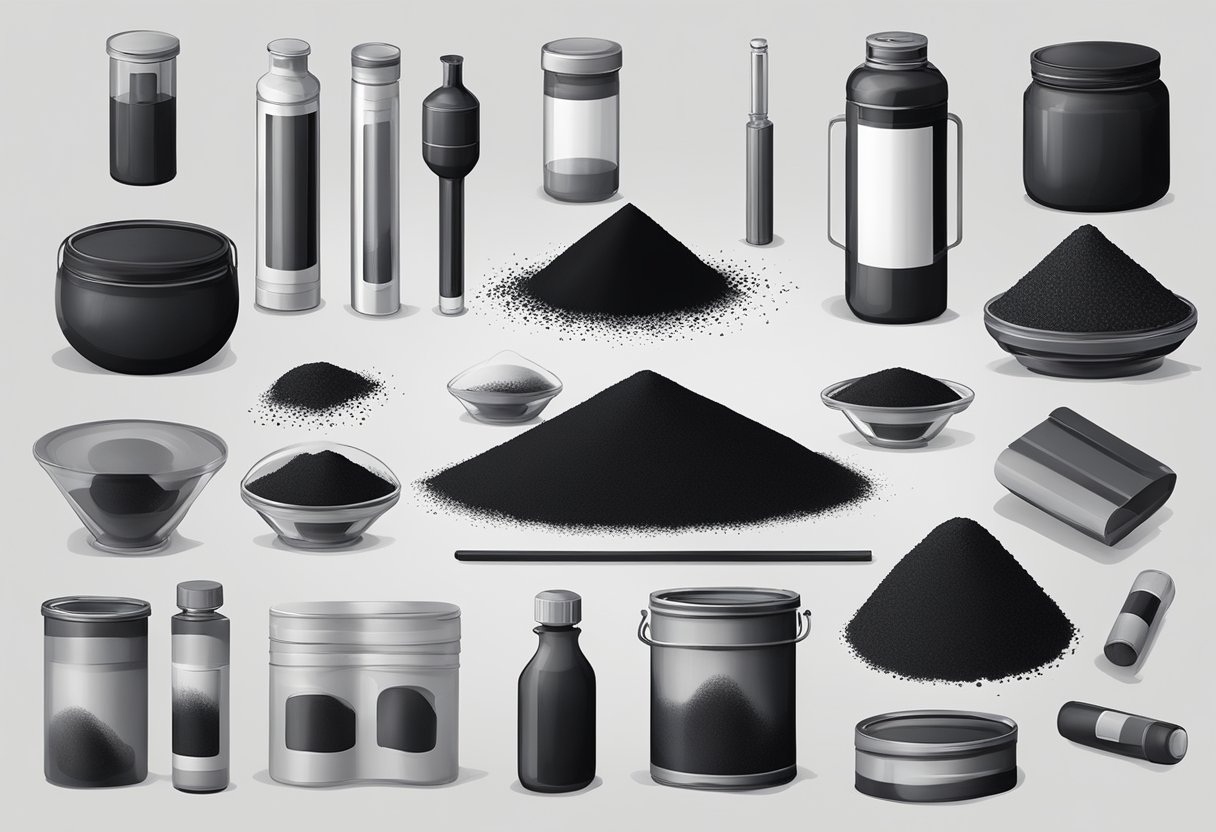Carbon Black N234: Properties and Applications
20/01/2024
Carbon black N234 is a type of carbon black that has gained significant attention in recent years due to its unique properties and wide range of applications. Carbon black is a form of carbon that is produced by the incomplete combustion of hydrocarbons, such as oil or gas. It is widely used as a reinforcing agent in rubber products, as well as in coatings, plastics, and other materials.

One of the key properties of carbon black N234 is its high surface area, which makes it an ideal reinforcing agent for rubber products. It is also highly resistant to abrasion, which makes it ideal for use in tires and other products that are subject to wear and tear. In addition, carbon black N234 has excellent electrical conductivity, which makes it useful in a variety of electronic applications.
Overall, carbon black N234 is a versatile material that has a wide range of applications in various industries. Its unique properties make it an ideal choice for use in rubber products, coatings, plastics, and other materials. As research continues to uncover new applications for carbon black N234, its use is likely to continue to grow in the years to come.
Chemical Properties

Molecular Structure
Carbon black N234 is composed of elemental carbon, with trace amounts of hydrogen, oxygen, and nitrogen. The molecular structure of carbon black N234 is highly complex, consisting of a network of fused aromatic rings with numerous functional groups attached to the surface. The functional groups on the surface of the carbon black particles are responsible for their reactivity and ability to interact with other chemical species.
Physical Characteristics
Carbon black N234 is a fine powder with a high surface area to volume ratio. It is insoluble in water and most organic solvents, but can be dispersed in certain media such as oils and resins. The particle size distribution of carbon black N234 can vary depending on the manufacturing process, but typically ranges from 10 to 100 nanometers in diameter. The specific surface area of carbon black N234 is around 120 m2/g, which is significantly higher than other carbon black grades.
Carbon black N234 has a high degree of thermal stability, with a decomposition temperature of around 600°C. It is also highly resistant to chemical attack, and can withstand exposure to acids, bases, and oxidizing agents. These properties make carbon black N234 a valuable additive in a wide range of applications, including rubber compounding, plastics, coatings, and inks.
Production Process

Furnace Black Method
Carbon black N 234 is typically produced using the furnace black method. This process involves the incomplete combustion of hydrocarbons in a furnace, resulting in the formation of carbon black particles. The hydrocarbons used in this process can include a variety of feedstocks, such as natural gas, oil, and coal tar.
The furnace black method is a highly controlled process that requires precise temperature and pressure conditions to produce carbon black of consistent quality. The carbon black particles produced in this process are typically small and highly structured, with a large surface area that makes them ideal for a wide range of applications.
Thermal Black Process
Another method used to produce carbon black N 234 is the thermal black process. This process involves the decomposition of hydrocarbons in a reactor at high temperatures and pressures, resulting in the formation of carbon black particles.
The thermal black process typically produces carbon black particles that are larger and less structured than those produced by the furnace black method. However, these particles can still be used in a variety of applications, such as reinforcing rubber and plastic products.
Both the furnace black and thermal black processes require careful monitoring and control to ensure that the resulting carbon black meets the desired specifications. This includes monitoring the temperature and pressure conditions in the reactor, as well as the composition of the feedstock used in the process.
Applications

Rubber Reinforcement
Carbon black N 234 is widely used as a reinforcing filler in rubber compounds due to its excellent properties. It provides improved tensile strength, abrasion resistance, and tear resistance to rubber products. The addition of carbon black N 234 also enhances the durability and longevity of rubber products, making them suitable for use in a wide range of industrial and consumer applications.
In the automotive industry, carbon black N 234 is commonly used in tire manufacturing. It helps to improve the performance of tires by increasing their resistance to wear and tear, improving their grip on the road, and reducing rolling resistance. It is also used in the production of industrial rubber goods such as conveyor belts, hoses, and seals.
Pigmentation
Carbon black N 234 is also used as a pigment in a variety of applications. It provides a deep black color and excellent UV stability, making it ideal for use in plastics, paints, and inks. It is commonly used in the production of automotive parts, such as bumpers and interior trims, as well as in consumer products such as packaging, toys, and electronics.
In the plastics industry, carbon black N 234 is used to improve the mechanical properties of plastic products. It provides increased strength, stiffness, and impact resistance to plastic parts, making them more durable and suitable for use in a wide range of applications.
Overall, carbon black N 234 is a versatile material with a wide range of applications in the rubber, plastics, and coatings industries. Its unique properties make it an essential component in many industrial and consumer products, contributing to their durability and longevity.
Performance Advantages

Abrasion Resistance
Carbon Black N 234 is widely recognized for its exceptional abrasion resistance properties. It is an ideal material for use in tire treads, conveyor belts, and other industrial applications that require high levels of durability. The addition of Carbon Black N 234 to rubber compounds significantly improves the resistance to wear and tear, ensuring a longer lifespan for the end product.
Tensile Strength
Carbon Black N 234 is also known for its impressive tensile strength. The addition of this material to rubber compounds enhances the strength and stiffness of the final product. This makes it an ideal material for use in high-performance tires, industrial belts, and other applications that require excellent tensile strength.
Overall, Carbon Black N 234 is a highly versatile material that offers significant performance advantages for a wide range of industrial applications. Its exceptional abrasion resistance and tensile strength make it an ideal choice for use in rubber compounds, ensuring the longevity and durability of the end product.
Environmental Impact
Emissions Control
Carbon black N 234 is produced through the incomplete combustion of heavy petroleum products. As a result, the production of carbon black N 234 generates significant amounts of greenhouse gases, such as carbon monoxide and carbon dioxide. However, manufacturers have implemented various emissions control measures to reduce the environmental impact of carbon black N 234 production.
One such measure is the installation of thermal oxidizers that combust the waste gases generated during production. These oxidizers convert the gases into water vapor and carbon dioxide, reducing the amount of pollutants released into the atmosphere. Additionally, many manufacturers have implemented energy-efficient technologies to reduce their overall energy consumption, further reducing their carbon footprint.
Sustainable Practices
Carbon black N 234 is an important component in the production of various rubber and plastic products. However, the environmental impact of these products goes beyond the production of carbon black N 234. Manufacturers have implemented sustainable practices to reduce the environmental impact of these products throughout their lifecycle.
One such practice is the use of recycled materials in the production of rubber and plastic products. This reduces the amount of waste generated and reduces the need for new raw materials. Additionally, manufacturers have implemented energy-efficient technologies in the production of these products, reducing their overall energy consumption and carbon footprint.
Overall, while the production of carbon black N 234 generates significant amounts of greenhouse gases, manufacturers have implemented emissions control measures and sustainable practices to reduce their environmental impact.
Market Analysis
Demand Trends
Carbon black N 234 is a widely used reinforcing filler in the rubber industry due to its excellent physical and chemical properties. The demand for carbon black N 234 has been steadily increasing over the years, driven by the growth of the automotive and tire industries. According to a report by Mordor Intelligence, the global carbon black market is expected to grow at a CAGR of 4.8% from 2019 to 2024.
The tire industry is the largest consumer of carbon black N 234, accounting for more than 70% of the total demand. The increasing demand for high-performance tires with improved fuel efficiency and durability is expected to drive the growth of the carbon black N 234 market. Moreover, the growing demand for industrial rubber products, such as hoses, belts, and seals, is also expected to contribute to the growth of the market.
Supply Chain Dynamics
The global carbon black N 234 market is highly consolidated, with a few major players dominating the market. Some of the key players in the market include Cabot Corporation, Birla Carbon, Orion Engineered Carbons, and Phillips Carbon Black Limited. These companies have a strong presence in the market and have adopted various strategies, such as mergers and acquisitions, partnerships, and collaborations, to strengthen their position in the market.
The raw materials used in the production of carbon black N 234 include feedstock oil, such as naphtha and natural gas, and other chemicals, such as sulfur and air. The availability and prices of these raw materials can have a significant impact on the production cost of carbon black N 234. Moreover, the increasing environmental regulations and concerns regarding the carbon footprint of the industry are expected to pose a challenge to the growth of the market. However, the development of sustainable production processes and the use of renewable feedstocks are expected to create new opportunities in the market.
Regulatory Framework
Carbon black N 234 is regulated by various governmental agencies worldwide due to its potential health and environmental impacts. In the United States, the Environmental Protection Agency (EPA) regulates carbon black under the Clean Air Act, which sets emissions standards for various industries, including the tire manufacturing industry, which is a major user of carbon black.
In Europe, carbon black is regulated under the Registration, Evaluation, Authorization, and Restriction of Chemicals (REACH) regulation, which requires manufacturers to register their products and provide information on their safety and environmental impact. Carbon black is also subject to the European Union’s Classification, Labelling and Packaging (CLP) regulation, which sets standards for the labelling and packaging of hazardous substances.
In addition to these regulations, many countries have their own specific regulations and guidelines for the use and handling of carbon black. For example, in Japan, the Ministry of Health, Labour and Welfare (MHLW) has established guidelines for the handling of carbon black in the workplace to protect workers from exposure.
Overall, the regulatory framework surrounding carbon black N 234 is complex and varies depending on the region and intended use of the product. It is important for manufacturers and users of carbon black to stay up-to-date on the latest regulations and guidelines to ensure their products are in compliance and to minimize potential health and environmental risks.
Future Prospects
Carbon black N 234 has a bright future ahead due to its versatile properties and increasing demand in various industries. The following are some of the potential future prospects of carbon black N 234:
Increased Demand in Tire Industry
Carbon black N 234 is widely used in the tire industry as a reinforcing filler due to its excellent abrasion resistance and high reinforcing ability. With the growing demand for high-performance tires, the demand for carbon black N 234 is expected to increase in the future.
Growing Demand in Plastics Industry
Carbon black N 234 is also used as a pigment and UV stabilizer in the plastics industry. The increasing demand for high-performance plastics in various applications such as automotive, electrical and electronics, and packaging is expected to drive the demand for carbon black N 234 in the future.
Advancements in Technology
With advancements in technology, the production process of carbon black N 234 is expected to become more efficient and cost-effective. This will lead to a reduction in the price of carbon black N 234, making it more accessible to a wider range of industries.
In conclusion, carbon black N 234 has a promising future due to its versatile properties and increasing demand in various industries. The tire and plastics industries are expected to be the major drivers of growth for carbon black N 234, and with advancements in technology, the production process is expected to become more efficient and cost-effective.




